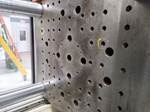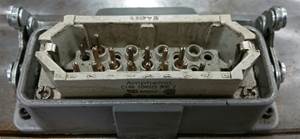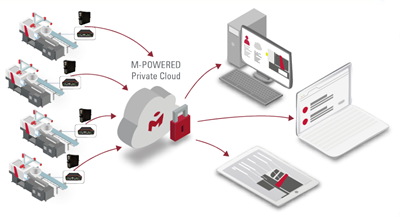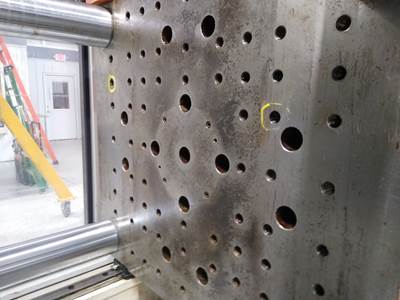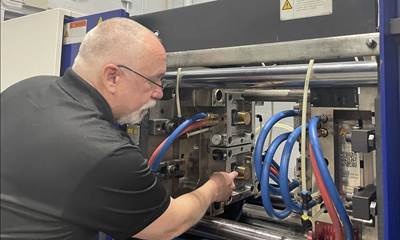Making Every Cycle Count — Best Practices in Maintenance for Maximum Uptime
Plastics processing equipment works hard around the clock. In many operations, unplanned downtime is too expensive to contemplate.
If you’re still fortunate enough to have a maintenance crew with decades of experience — congratulations — but you’re one of a dwindling minority. A growing number of operations have relatively inexperienced maintenance teams that are learning critical lessons the hard way and reacting as problems occur.
Fortunately, many breakdowns can be prevented altogether by adhering to a few simple best practices. Here’s a guide to some of the most useful and proven strategies, including some that even experienced hands don’t always adhere to.
Make a Maintenance Plan and Leverage Machine Data
Let’s face it: Many operations simply don’t follow original equipment manufacturer (OEM) maintenance guidelines. That’s a recipe for breakdowns. You can prevent a lot of headaches by making time for regular upkeep.
At the very least, having a preventative maintenance plan is better than waiting for things to break. You’ll probably perform some service your machines don’t really need, but that will still be cheaper than unscheduled shutdowns.

Skilled maintenance workers have become more scarce at plastics processors. Source: (all) Milacron
Predictive maintenance, also known as condition monitoring, is a better option. Modern technologies that monitor your machines’ performance can keep you ahead of issues that could compromise uptime. Ideally, you should keep an eye on your data with the aid of tools capable of sifting through vast quantities of information to pinpoint the details that matter most to your performance. These tools also make it possible to track machine trends over time, identifying evolving issues and potentially fixing them before they cause bigger problems.
Data monitoring can save you significant time and money when an issue requires troubleshooting. Sharing incident data with your service provider can allow many issues to be solved remotely. For example, shops that use Milacron’s M-Powered system can resolve troubleshooting events with remote support 50% of the time. Even if on-site support is needed, machine data can still make the process go faster. Technicians will already know the details of the problem before they arrive, ensuring they have the right tools and parts to complete the job.
What if you don’t have the in-house expertise or personnel to maintain equipment regularly? Your OEM may be able to back you up by augmenting your maintenance staff, providing guaranteed levels of service, or offering other ways to improve machine performance.
Keep Critical Spares On Hand
This may also sound like a no-brainer, but many operations don’t keep sufficient wear parts in stock. Sooner or later, this “run-to-fail” mentality will likely lead to costly malfunctions.

Newer controls provide opportunities to gather and analyze process data.
Depending on your process and how well you maintain your equipment, heater bands, thermocouples and filters are the components most likely to wear out first. Pumps, valves, motors and screws can last longer — typically 5 to 10 years — but you should still have backups available for anything that’s critical to your operation.
Keep spares organized, secure and clearly identified so your team can find them quickly. Ask your OEM for a detailed list of critical parts and recommended timelines for replacement.
Plan to Get the Most From Aging Machines
If your equipment is 15 to 20 years old or more, it’s wise to assess critical components and determine what you might need in the event of a breakdown. Contact your OEM well in advance if there’s a chance they’ll need to manufacture a part for an older machine.
Machine assessments also offer valuable ways to keep legacy equipment running at peak performance. They typically will include quantitative measurements of machine performance, prescriptions for extending and improving useable machine life, optimizing maintenance schedules and overall reducing total cost of ownership.
Consider Rebuilding Instead of Replacing
Many injection molding and other plastics processing machines in the U.S. are nearing the end of their rated lifespans. According to the 2024 Machine Rate Report published by the Manufacturers Association for Plastics Processors (MAPP), the mean machine age in the United States is 13 years in the consumer goods sector and 15.7 years for industrial applications. These figures are just the tip of the iceberg, however. More than 61% of all plastics processing machines are located in the Midwest, where the mean machine life is 22.6 years.

Old machines can be rebuilt to include new contollers.
These sobering statistics don’t mean you have to abandon good machines. Rebuilds and retrofits can extend their useful life for decades, typically at one-third the costs of replacements, using budgets allocated for operations rather than capital investments. In addition to saving money and prolonging machine life, you may be able to extend capacity or incorporate capabilities such as artificial intelligence (AI), machine learning and other modern control options, which offer competitive advantages that were unavailable as recently as a few years ago.
It Pays To Think Long-Term About Total Costs
Price is what you pay, but value (what you get) is far more important. Quality matters when you’re running machines around the clock. Parts with cheap price tags can cost you big later, especially if they don’t come backed by a warranty or hassle-free return policy. Another pitfall of shopping based solely on price is that parts aren’t created equal. Even if a component looks like it will work, it may not be a drop-in replacement for the part you need. Parts can appear similar, but their functions may depend on being tuned for your system. Additionally, buying parts from non-OEM providers opens you up to the risks of purchasing used parts (either by mistake or fraudulently promoted as new), counterfeits, knockoffs or generic parts, which lack the proper mounting, connections, electrical plugs or other essential features needed to ensure they will work with your equipment.
Price buyers are also less likely to get great customer support, if they get any support at all. Expensive shipping and missing features are other common hidden costs.
Think of equipment parts as investments rather than expenses. Genuine OEM parts are designed with the specific needs of your machines in mind, considering performance and other details that third parties are unlikely to know. In addition, a partner who can get you back up and running faster will be far more valuable than a low bidder that can’t — or won’t — support you when a cheap product fails.
Get OEM Training
Nobody knows plastics processing machines better than the people who build them. They can teach new and existing team members how to get the most from your machines. Many OEMs conduct training sessions in their factories or distribution centers, but a good one will also offer remote and on-site training. These options are ideal for two reasons. First, they’ll minimize disruptions to your operation. Second, they’ll allow your workers to develop their skills on the machines they’ll actually use, not just the latest models. In addition, training makes workers feel valued, reducing turnover.
Look for OEM Partners With Solid Technical Expertise
No matter what challenges your operation faces, you’re likely to need expert support sooner or later. Although many suppliers sell parts, few have the experience to help your team solve problems. A good OEM can offer you more detailed assistance, including processing information, wear characteristics and advice on expected lifespans.
OEMs may also offer consulting services that can help you deal with any of the challenges we’ve covered in this article, plus many more. As technology evolves and competition for talented workers continues to challenge the industry, this level of reliable support is becoming increasingly vital. Establish relationships like these before you need them. You’ll be glad you did.
About the author: Randy Ellis is a veteran senior service engineer at Milacron with more than 35 years of experience. His constant aim is to provide great customer support. Over his career, he’s been recognized with multiple awards for customer service and excellence, reflecting his ongoing commitment to that goal. Randy earned a bachelor’s degree in electronic engineering technology from DeVry University.
Related Content
Process Monitoring or Production Monitoring — Why Not Both?
Molders looking to both monitor an injection molding process effectively and manage production can definitely do both with tools available today, but the question is how best to tackle these twin challenges.
Read MoreHot Runners: How to Maintain Heaters, Thermocouples, and Controls
I conclude this three-part examination of real-world problems and solutions involving hot runners by focusing on heaters, thermocouples, and controls. Part 3 of 3.
Read MoreBack to Basics on Mold Venting (Part 1)
Here’s what you need to know to improve the quality of your parts and to protect your molds.
Read MoreA Systematic Approach to Process Development
The path to a no-baby-sitting injection molding process is paved with data and can be found by following certain steps.
Read MoreRead Next
Injection Molding: Milacron Expands Industry 4.0 Platform
In a series of webinars, plastics machinery manufacturer Milacron revealed details of its M-Powered suite of Industry 4.0 tools, including expanding functionalities.
Read MoreInjection Molding: Focus on these Seven Areas to Set a Preventive Maintenance Schedule
Performing fundamental maintenance inspections frequently assures press longevity and process stability. Here’s a checklist to help you stay on top of seven key systems.
Read MoreTop Maintenance Tips to Boost Molding Machine Performance
A well-maintained injection molding machine will improve uptime, decrease cycle time and extend the life of the machine.
Read More
